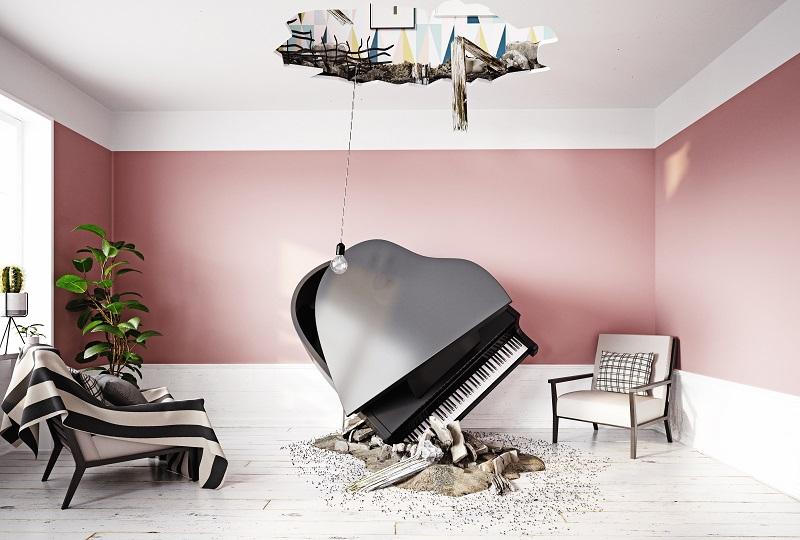Over time, virtually all homes will develop cracks that are cosmetic in nature and do not necessarily mean there’s a larger problem occurring. It’s pretty common for houses to settle over time, and when that happens you will find small cracks. But some cracks, especially those wider than 1/8-inch, may signal structural issues.
For cracks in your ceiling or walls, the common causes are structural damage, the natural settling that happens as buildings get older, or poor workmanship.
Here are some common types of cracks we encounter and what they usually mean.
Thin, straight crack
This often means too little drywall mud was used during the tape and bed process. You normally don’t need to do anything with these cracks, although if you want to you can use a small bit of drywall mud on the underside of the tape seam, and smooth it so that the tape adheres to the drywall again.
Tiny spiderweb-like cracks
Sometimes, with textured ceilings, drywall compound is used in thin layers. If it is put on too thickly, it can shrink as it dries, which can lead to these types of cracks. For this fix, you can apply a thin bit of drywall mud to the cracks. Another option would be to sand and remove the texture to redo the ceiling, but this is a much messier option.
A discolored crack
Discolored cracks most often mean moisture and a leak. What often happens is that an overhead leak drips down the inside of the wall and finds the space between the drywall seams, makes the tape wet and creates discoloration and cracking. For these types of cracks, you need to first determine the source of the water and make a fix there.
Horizontal crack between interior wall and ceiling
Most often this results either from foundation settling, or it can be the roof trusses expanding and contracting slightly with changes in temperature and moisture in the attic. It’s best to have a professional take a look to make sure there are no larger foundation or roof issues that need addressed. In the simple case of ceiling trusses moving slightly (as they are designed to do), you may not need any action and could potentially disguise the small crack with some ceiling molding.
One continuous crack that runs all the way across a ceiling and down a wall
These can sometimes be house settling over time. Yet it can also mean foundation or structural issues, especially if the crack is wider than 1/8″. It’s best to consult a professional to rule out any bigger issues.

Ceiling cracks with sagging
This is a sign of a problem. This occurs more frequently when something in the room or area above a ceiling is very heavy, for example a bathtub. Wherever it occurs, it should be looked at a by a professional and will likely need some work to the structural support to prevent even larger issues.
A lot of cracks throughout the home
This may be a sign of structural issues and you should consult a professional.
While this list doesn’t cover all cracks you may encounter, the best thing you can do is consult with a professional whenever you have concerns, especially if a crack in a wall or ceiling is accompanied by other issues such as cracks in exterior masonry, leaks, or other concerns.
For commercial property inspections in the Dallas/Fort Worth area, including a thorough and informative home inspection report, learn more at
or request a quote for a commercial inspection at
682-351-2267


